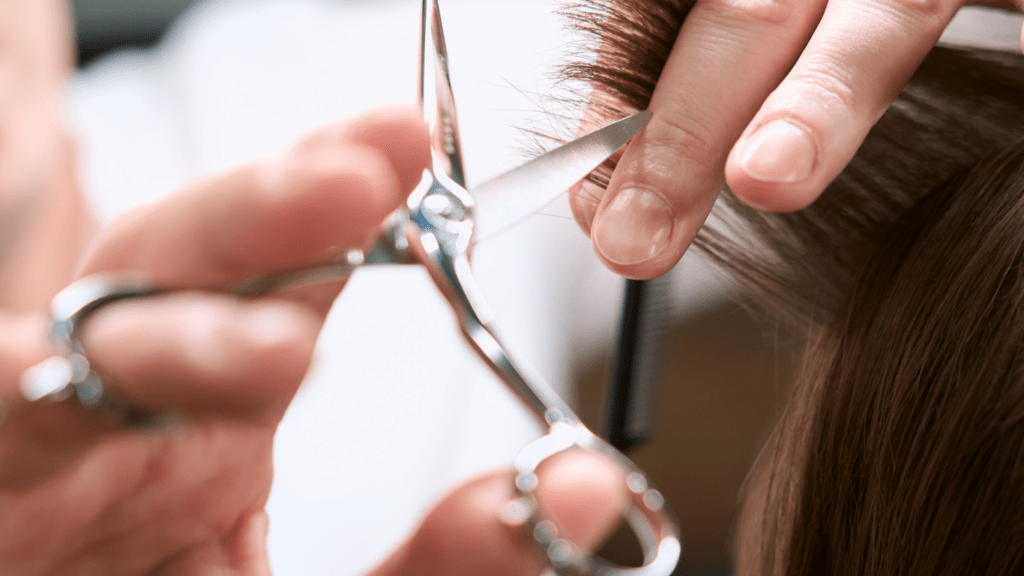Understanding Hair Growth
Hair growth follows a natural cycle involving three stages: anagen, catagen, and telogen. The anagen phase is the active growth period, lasting 2-7 years. Hair grows about half an inch per month during this stage. Genetics and health influence the length of this phase.
The catagen phase is a transitional stage lasting about 10 days. During this phase, hair follicles shrink and detach from the skin’s blood supply.
In the telogen phase, lasting around 3 months, hair rests and eventually sheds. After shedding, new hair emerges from the same follicle, beginning a new cycle. Up to 10-15% of hair is in this phase at any given time.
The health of your scalp affects hair growth. A clean, well-nourished scalp provides optimal conditions for hair follicles. Regular trims remove split ends. Split ends, if left unattended, can lead to breakage and hinder the appearance of longer, thicker hair.
Factors such as stress, diet, and genetics can influence hair growth. Stress disrupts the hair cycle, potentially pushing hair into the resting phase prematurely. A balanced diet rich in vitamins and minerals supports hair health. Genetics determine the potential length and texture of your hair.
Understanding these factors helps manage expectations and fosters better hair care practices. Regular trims play an essential role in maintaining hair health by allowing hair to reach its full potential.
The Importance Of Regular Trims
Regular trims play a vital role in hair health. They’re essential for maintaining strong, beautiful hair and ensuring optimal growth.
Preventing Split Ends
Trimming regularly helps prevent split ends, which can travel up the hair shaft if left untreated, causing more extensive damage. Cutting off the damaged ends every 6-8 weeks keeps hair looking fresh and healthy and prevents breakage that can lead to loss of length. Style-conscious individuals often favor this practice to retain uniformity and manageability in their hair.
Maintaining Hair Shape
Regular trims help maintain the desired hair shape and style. Over time, hair can lose its shape due to growth patterns and environmental factors. A good trim ensures that hairstyles stay in proportion and structured, offering a polished appearance. Whether you’re sporting a bob, layers, or long locks, consistent trims assist in keeping lines clean and styles defined.
Health Advantages Of Trimmed Hair
Regular trims offer several health benefits for hair. These include improved hair strength and enhanced thickness, contributing to overall hair health.
Improved Hair Strength
Trimming hair promotes strength by removing split ends. Split ends, if left untreated, can travel up the hair shaft, causing breakage. Eliminating these damaged ends reduces the risk of breakage, making the hair less likely to weaken over time. Healthy ends are more resilient against daily wear and tear.
Enhanced Hair Thickness
Trims can lead to thicker hair. When damaged ends are removed, hair appears fuller and more voluminous. Without split ends, hair strands align more uniformly, giving the impression of increased density. Regular trims can help maintain this fuller look, adding to the perception of thicker hair.
How Often Should You Trim Your Hair?

Regular trims play a key role in maintaining healthy hair. The optimal frequency for trimming varies based on hair type, style, and individual growth rate. Generally, every 6-8 weeks suits most hair types.
Hair Type and Texture
- Fine Hair: Trimming fine hair every 6 weeks prevents breakage and maintains volume. Fine strands show damage more readily, so frequent trims are essential.
- Curly Hair: Curly hair benefits from a trim every 8-12 weeks. This timeframe helps manage split ends without disrupting curl patterns.
- Thick Hair: Thick hair can go 8-10 weeks between trims. This type tends to be more resilient, so less frequent trimming is suitable.
Hair Goals and Style
- Growing Out Hair: If growing your hair, get trims every 8-12 weeks. This interval removes split ends without sacrificing length.
- Maintaining Short Styles: Short haircuts need trims every 4-6 weeks. Keeping the shape and style intact requires more frequent maintenance.
- Maintaining Long Hair: Long hair benefits from trims every 8-12 weeks. Regular trims help keep the ends healthy and prevent breakage.
- Heat Styling: If using heat tools often, trim every 6 weeks. Heat increases the likelihood of split ends.
- Color Treatments: For colored hair, trims every 6-8 weeks reduce damage from chemicals and keep hair vibrant.
- Natural Hair Care: If embracing natural hair, trim every 8-12 weeks. This period promotes healthy growth and avoids unnecessary damage.
Consistent trims contribute to healthier hair by addressing split ends and damage. Tailoring the trim schedule to your specific needs ensures your hair stays strong, vibrant, and gorgeous.
Tips For Effective Hair Trimming
Effective hair trimming techniques maintain optimal hair health, preventing split ends and promoting growth.
Professional Vs. DIY Trimming
Professional trimming offers expertise and precision that can be hard to achieve at home. Hair stylists receive comprehensive training to understand hair structure, types, and the best cutting techniques. Professionals provide personalized advice, ensuring trims suit your hair type and goals.
DIY trimming is convenient and cost-effective but requires proper tools and techniques. Use sharp scissors designed for hair cutting, not regular household scissors. Follow online tutorials from credible sources and start with small sections to minimize mistakes.
Best Practices For At-Home Trimming
Prepare hair by washing and drying it completely. Clean hair is easier to cut, and dried strands reveal their natural length and texture.
Use professional-grade scissors to achieve a clean cut. Blunt or old scissors can damage hair, causing more split ends.
Trim small sections at a time, starting from the bottom and moving upwards. This method ensures uniformity and prevents significant mistakes.
Regularly trim every 6-8 weeks, adjusting frequency based on hair growth and specific needs. Consistent trims maintain healthy ends and prevent significant damage.
Maintain a trimming schedule and monitor hair changes, adjusting techniques and tools as necessary. Keeping a record helps identify patterns and improves future trims.



 Founder & Hair Care Specialist
Edwardenn is the visionary force behind the website, with a deep passion for promoting healthy, beautiful hair. With years of experience in hair care and wellness, Edwardenn founded this platform to offer the latest hair care news, health tips, and expert advice. His mission is to empower individuals to understand and care for their hair, no matter their hair type or goals.
Founder & Hair Care Specialist
Edwardenn is the visionary force behind the website, with a deep passion for promoting healthy, beautiful hair. With years of experience in hair care and wellness, Edwardenn founded this platform to offer the latest hair care news, health tips, and expert advice. His mission is to empower individuals to understand and care for their hair, no matter their hair type or goals.

